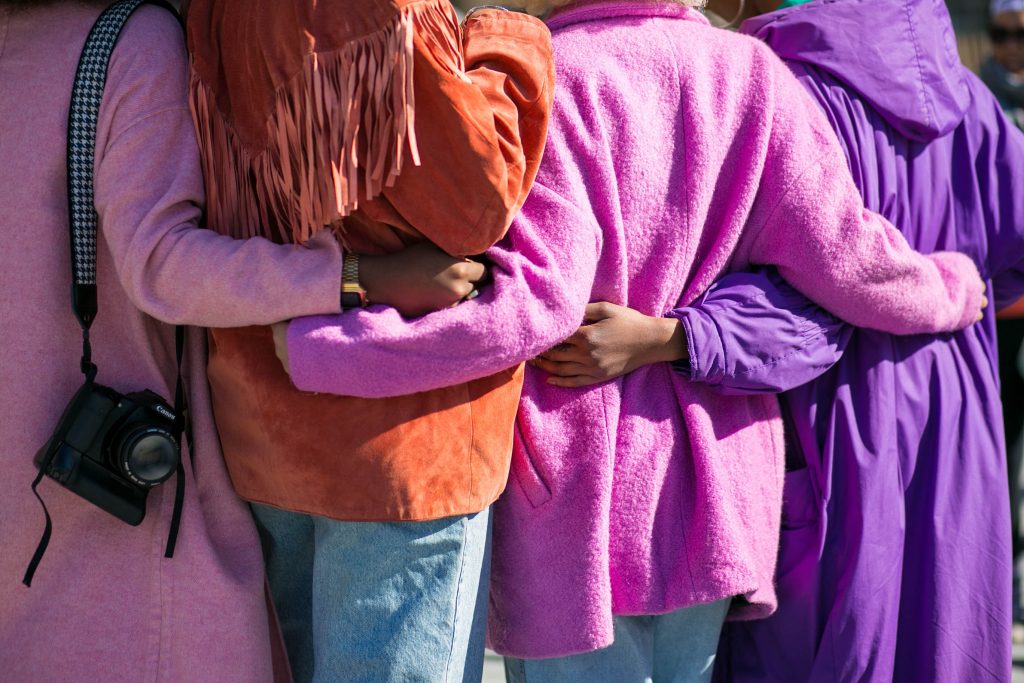
In recent years, Galentine’s Day has gained great popularity. Chicago offers a wide range of activities for you to celebrate with the gals. Keep reading to find out why Chicago is the perfect destination for a Galentine’s Day trip!
What is Galentine’s Day?

Simply put, Galentine’s Day is like Valentine’s Day, but for the gals! And though unofficial, in the eyes of girls everywhere, it’s totally a thing. The holiday falls on February 13 each year . Which is a Monday this time around; and is geared towards celebrating the women in your life. Best friends, sisters, moms, grandmas—you name it, it’s your chance to show them just how much they mean to you. Which, of course, you can and should do every other day of the year, too, but it’s extra fun when there’s a day dedicated to it. Not to mention, the beloved aesthetic of heart-shaped-everything and all things pink!
Galentine’s Day and Its Connection to Parks and Recreation
Believe it or not, we actually have Amy Poehler to thank for this day of celebration. Well, kinda. Her fictional character, Leslie Knope, from the comedy show Parks and Recreation, coined the term during the second season of the show in 2010. She explains in the episode, “What is Galentine’s Day? Oh, it’s only the best day of the year. Every February 13th, my lady friends and I leave our husbands and our boyfriends at home, and we just come and kick it… ladies celebrating ladies.” So, basically, it’s the greatest fake holiday ever!
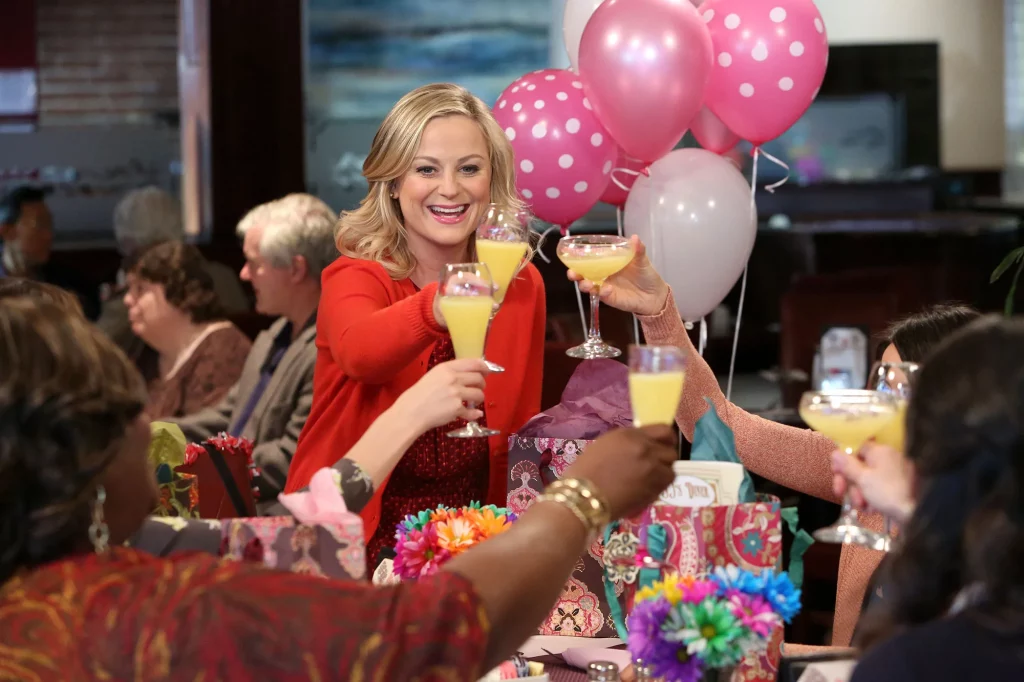
Parks and Recreation Galentine’s Day Episodes
Galentine’s Day happens three times during the seven seasons of Parks & Rec. Why not spend February 13 watching them with your friends? And, while you’re at it, throw in the Treat Yo’ Self episode (Season 4, Episode 4: Pawnee Rangers) to round out the evening (fragrances! mimosas! massages!)?
- Season 2, Episode 16: “Galentine’s Day”
- Season 4, Episode 14: “Operation Ann”
- Season 6, Episode 17: “Galentine’s Day”
All episodes of Parks & Recreation are available for streaming on Peacock. Plans start as $4.99/month.
Ways to Celebrate
What better to celebrate Galentine’s Day than to take a girls trip. One of the best places to do this is the Chicago, better known as the Windy City.
Why Chicago
The city of Chicago is located in the northeast corner of Illinois. It borders Lake Michigan and is only a short drive from the Illinois-Indiana border and the Illinois-Wisconsin border. Chicago is likely the most well-known city in Illinois, probably because it is by far the largest city in the state, not to mention the third largest in the U.S. Why is Chicago so much larger than all the other cities in the area? Let’s dive into the city’s history to find out.
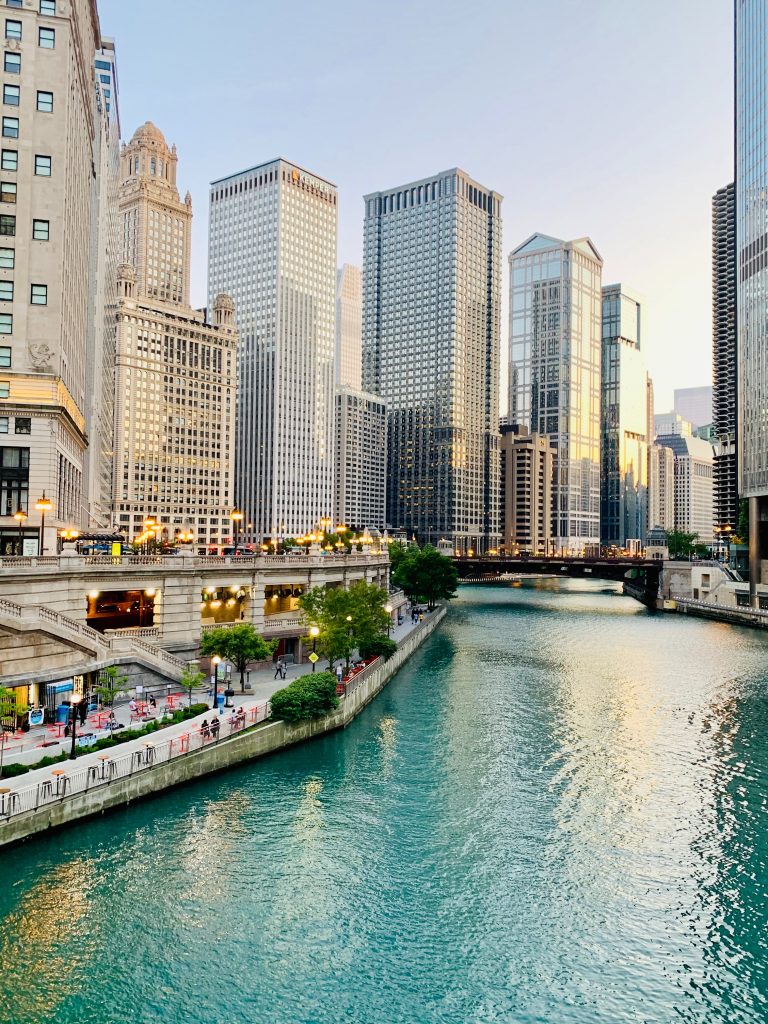
The area near the banks of the Chicago River and Lake Michigan was first settled by several Native American tribes. In 1780, Jean Baptiste Point du Sable settled in the area and others came after. In 1837, Chicago was officially incorporated as a city with a population of 4,000. Less than two decades later, the city was home to more than 30,000 people and was the world’s largest grain port. Chicago expanded rapidly from there, and by 1930, more than 3 million people lived in Chicago.
Residents of Chicago were innovative and didn’t shy away from opportunities to try out new technology. For example, the world’s first skyscraper was built in 1885 in Chicago. So, as industries boomed in the city, more and more people moved to Chicago and sought work.
Why Is Chicago Called the Windy City?
While the nickname “Windy City” implies that the city gets a lot of wind, Chicago isn’t even in the top 20 cities with the highest average wind speed. The top five cities are Mt. Washington, New Hampshire; Dodge City, Kansas; Amarillo, Texas; Cheyenne, Wyoming; and Goodland, Kansas — none of which even border the Great Lakes. Based on this information, any one of those cities would have more claim to the nickname “Windy City” than Chicago. So the question still stands: Why is Chicago called the Windy City?
Early Nickname
One of the earliest recorded references of Chicago being called “Windy City” was in 1876. A headline in the Cincinnati Enquirer stated: “That Windy City. Some of the freaks of the Last Chicago Tornado.” So, while Chicago may not be the windiest city in the U.S., the area has been plagued by significant tornadoes from time to time.
This early reference may have also had another meaning. The reference likely jabs at the longwinded people of Chicago, who were full of hot air. Since the reference came from a Cincinnati newspaper, it was a form of name-calling — apparently the people of Cincinnati, St. Louis, and Chicago all wanted to prove that their city was the greatest in the Midwest. So, the Cincinnati Enquirer called out Chicago’s residents and commented on the city’s windstorm all in one go.
The Windy City Sticks
Based on these early records, the nickname “Windy City” originated based on the area’s windstorms. Also, because the people were known for being full of hot air. However, the dual meaning seems to have been lost over time. Most people believe that “Windy City” refers to windy weather rather than windy people. Whatever the origin of the nickname, the name most certainly stuck, and now “Chicago” and “Windy City” are nearly synonymous.
While “Windy City” is probably Chicago’s most popular nickname, it isn’t the only one. Lesser-known nicknames that may have accurately described the city at one point in its history, include “The City of Big Shoulders,” “The Second City,” “Hog Butcher for the World,” “Chi-town,” “The White City,” and “The City that Works.”
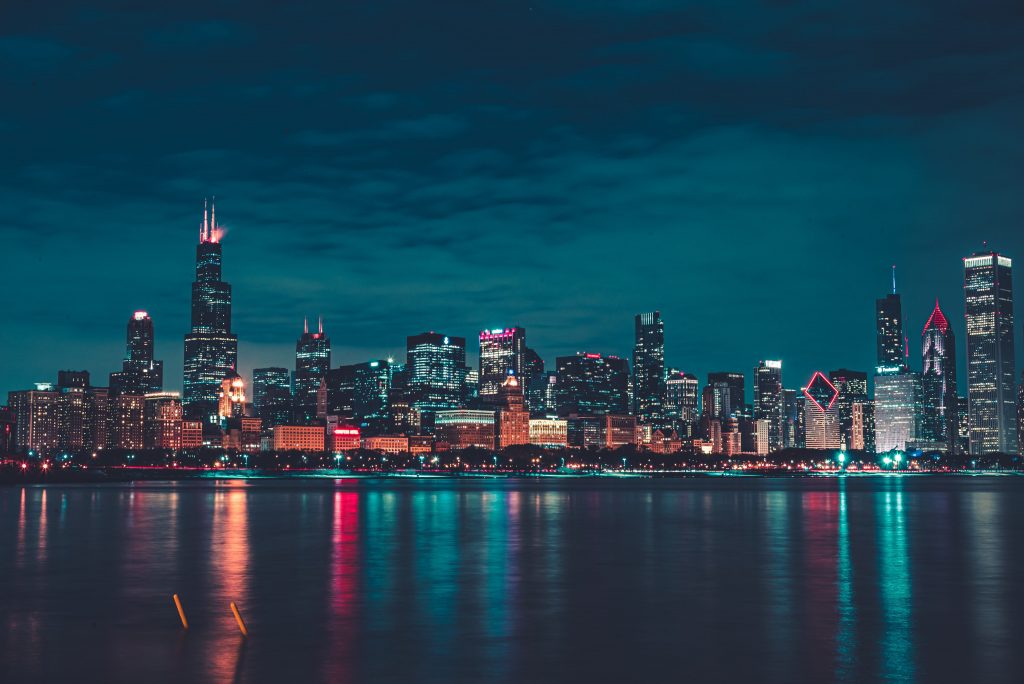
As with many other cities, Chicago has a city flag. It features light blue and white stripes and four six-point stars. Each point of each star has a specific meaning. Two points on the third star represent two of Chicago’s nicknames: “The Wonder City” and “The Convention City.” Every once in a while, leaders push to add another star to the flag to represent another part of Chicago’s rich history. However, none have suceeded since 1939 when the fourth star was added.
Things to do in Chicago
Comedy Club
Chicago is where famous comedians including Tina Fey, Chris Farley, and Jim Belushi got their starts. It’s a city with several well-known comedy clubs, including the The Second City which gave rise to many faces you may recognize from Saturday Night Live.
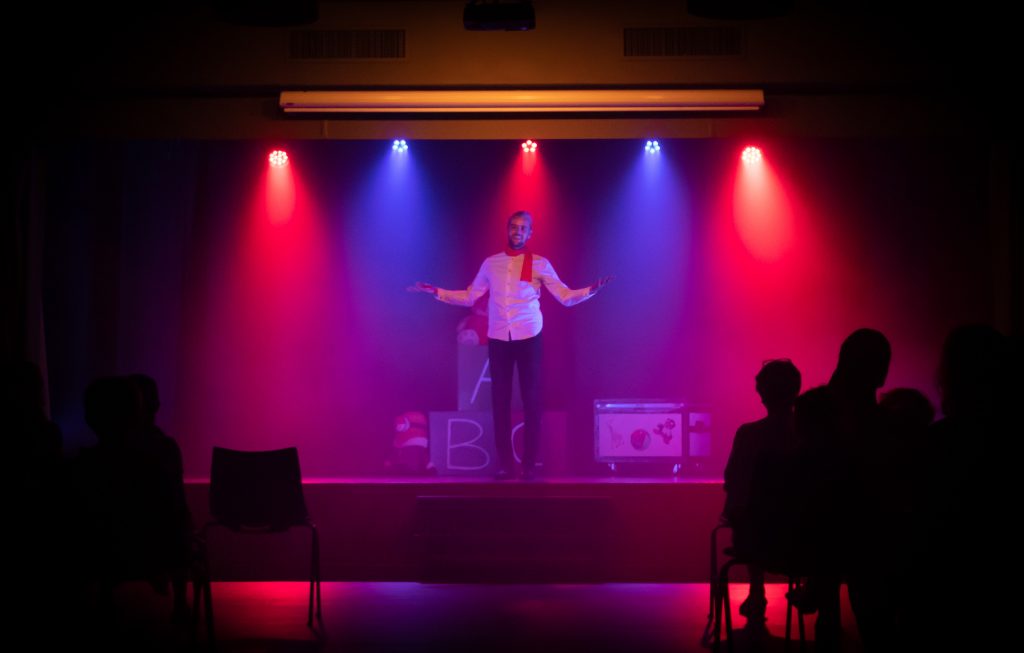
Live Music
Chicago is a live music heaven with a variety of venues that host performers of all genres throughout the year. It also hosts several music festivals each year, including Lollapalooza, Riot Fest, and world-famous blues and jazz festivals.
Take A Food Tour
There’s no doubt that Chicago is a foodie’s playground. The city offers an abundance of international and specialty restaurants, as well as distinct Chicagoan staples.
Whether you’re looking to splurge on a luxury meal at a Michelin-star restaurant like Alinea, wanting to indulge in Chicago-style hot dogs and deep-dish pizza, or try a cuisine you’ve never tasted before, Chicago has you covered.
If you’re looking to really experience Chicago’s food scene, then I recommend booking a food tour like the one above. Or, plan your trip during the city’s famous “Taste of Chicago” food festival (2022 dates are June 11th, 18th, and 25th and July 8-10). No matter your taste, budget, or cuisine preference, Chicago’s food scene has something for everyone.
Visit Lake Michigan
winter, part of the lake freezes over and creates icy waves along the shore. In the summer, the lake provides a welcome escape from the heat.
If you plan on visiting during the warmer months, set aside some time for the Lakefront Trail. This paved path runs for 18 miles along the city and shoreline, providing incredible views and a refreshing escape. The trail is free to everyone and perfect for walking, running, and biking.
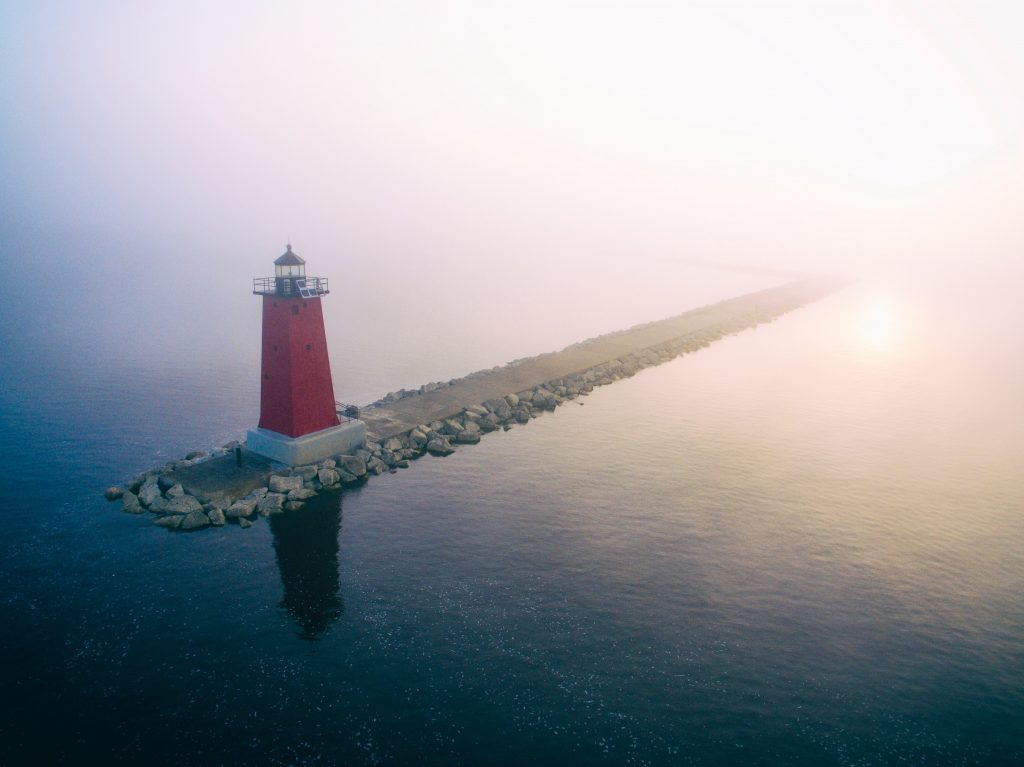
For a little something different, book a sightseeing cruise like the one above! This is the perfect way to enjoy the lake and witness the Chicago skyline from a unique perspective.
The Magnificent Mile
If you’re looking to do some serious damage with your credit cards, look no further than the stretch of Michigan Avenue known as the Magnificent Mile. You’ll find a mix of high-end designer stores, sprawling department stores, and more affordable retailers like Marshalls.

National Museum of Mexican Art
This Pilsen museum is an ideal place to immerse yourself in Mexican art and culture without leaving Chicago city limits. It’s one of few major museums in the U.S. dedicated to showcasing Mexican, Latino, and Chicano art and culture.
Chicago River
Surprise! Not only does Chicago have access to a lake, but a river, too! The Chicago River runs right through the center of the city along the northwestern edges of the Loop. And even with Lake Michigan nearby, the river is still worth seeing if you’re downtown.
Although there are tons of bridges and vantage points to see the river from, I recommend taking a stroll down the Chicago Riverwalk. The 1.25-mile Riverwalk is made up of six “coves,” lined with bars, restaurants, museums, and more. In the warmer months, you can even go kayaking on the river.
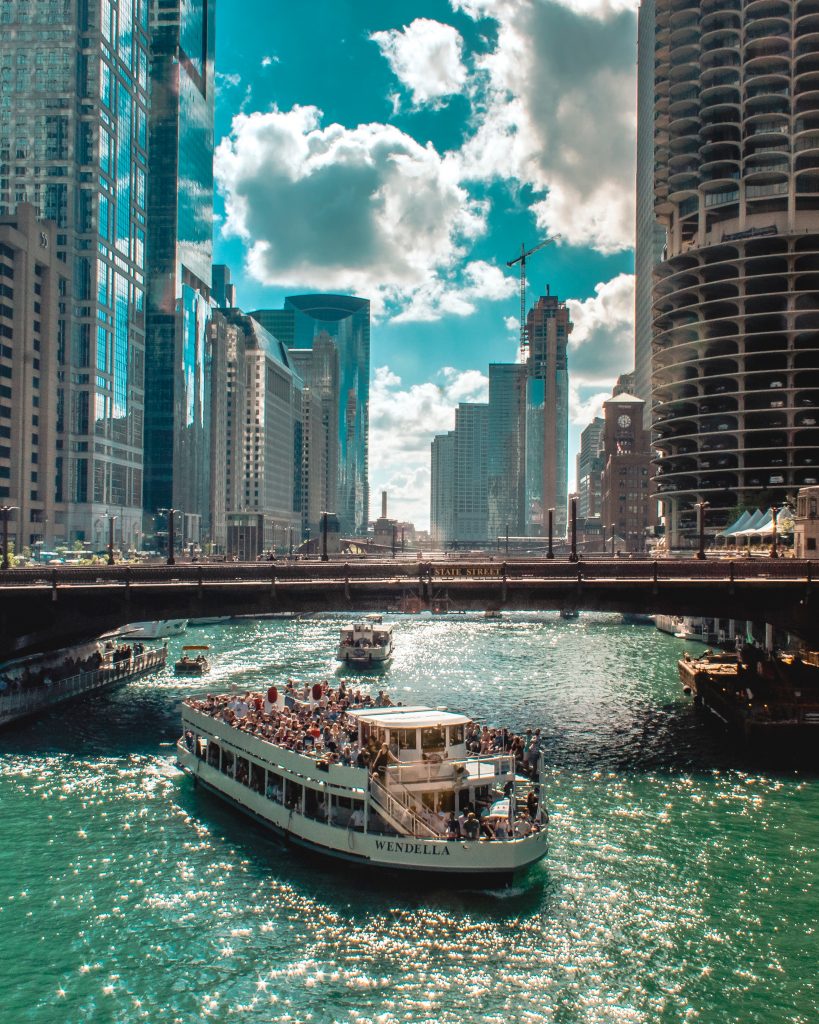
Another great way to enjoy the river is by taking an architecture river cruise like the one above – Chicago has a rich history surrounding architecture
Millennium Park
Millennium Park is located in downtown Chicago near the Lake Michigan shoreline. Its Jay Pritzker Pavilion is a Frank Gehry-designed bandshell that hosts concerts and other public events. It’s also home to the Bean.
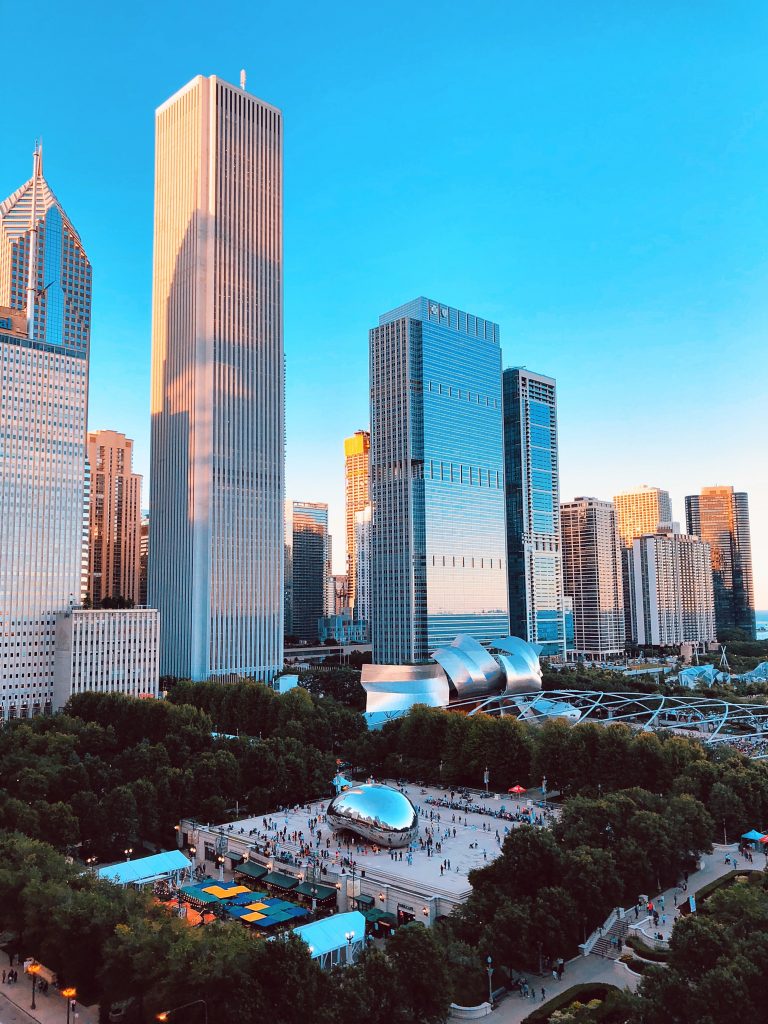
Chicago Cultural Center
The Chicago Cultural Center is one of Chicago’s (and the nation’s) most comprehensive cultural centers. Built in 1897, this historic Chicago landmarkserves as a cultural destination for the public. The building itself has two beautiful stained-glass domes and intricate architectural details throughout, making it an absolute marvel.
The center’s main focus is bringing free events for everyone to enjoy. This includes art performances and exhibitions, lectures, and cultural events. Guided tours are also available.
If you’re interested in history, arts, and culture, then this is a good stop to make on your itinerary for Chicago. If you’re looking for a more comprehensive tour of historical and architectural features like the building’s stained-glass dome, I recommend taking the Tiffany Treasures Walking Tour up above.
Architecture River Cruise
Chicago is an architecture nerd’s paradise. Several buildings here have been designed by world-renowned architects, and there’s no better way to see them than from the river.
Visit the Beach
Believe it or not, Chicago is a beach town during the summer. Oak Street and North Avenue Beaches are two sandy beaches along Lake Michigan that are close to downtown and will give you the opportunity to bask under both the sunshine and the shadows of the city’s skyscrapers.
Willis Tower
For breathtaking views of Chicago, head to Willis Tower in the Loop. Formerly known as Sears Tower, this 108-story building is the tallest building in all of Chicago and the second tallest building in North America.
The Willis Tower Skydeck and Ledge is located on the 103rd floor and is a family-friendly way to take in the city below. Upon entrance, you’ll weave through educational displays and exhibits designed to give you a taste of Chicago history. This is all leading up to the main Skydeck itself where you’ll see the city through floor-to-ceiling windows.
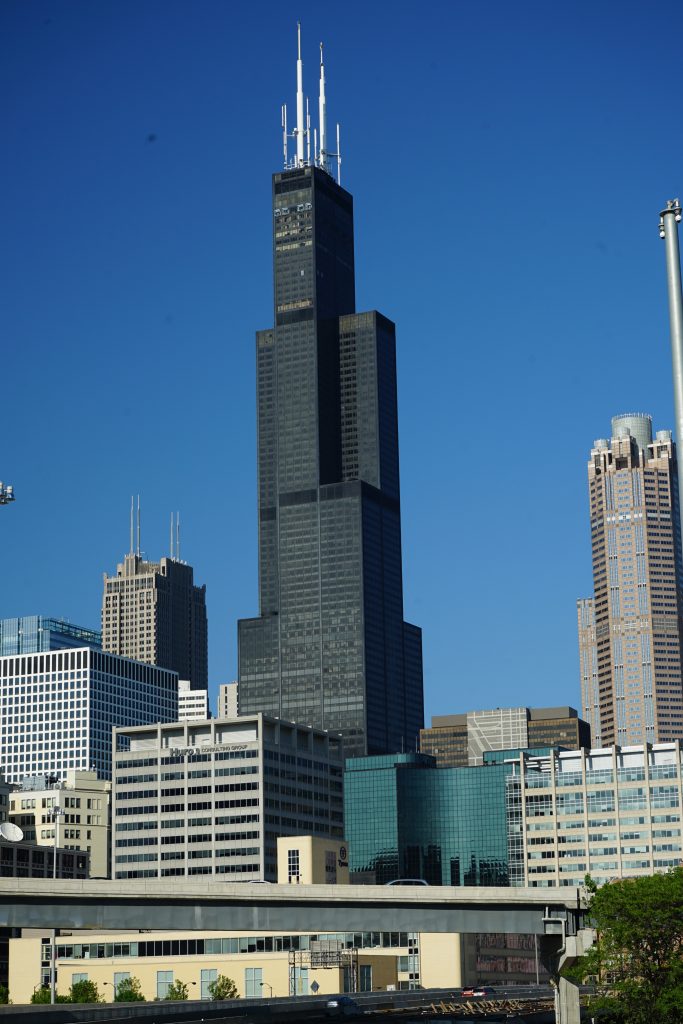
If you’re not afraid of heights, step out on the Ledge. This 4.3 feet glass box extends out over the city for views in every which way – on a clear day you might be able to see four states!
Navy Pier
Navy Pier is one of Chicago’s most popular tourist destinations—and with good reason. The 3,300-foot (1,010-meter) pier jutting into the waters of Lake Michigan, originally constructed in 1916 as a freight dock and public space, encompasses almost 50 acres (20 hectares) of exhibits, rides, parks, and family attractions.
Hard Rock Cafe
The Hard Rock Cafe Chicago has been serving the Chicago River North area since its opening in 1986. River North borders the Magnificent Mile, is just across from the Loop, and a few blocks west of Michigan Avenue, a vibrant and popular dining and nightlife district.Be sure to order Hard Rock’s signature food offerings like the Legendary Burger and drinks like Rockarita. Check the menu for house made local entrees that have a touch of Chicago flavor as well.Like other Hard Rock Cafes around the world, the Hard Rock Cafe Chicago features music memorabilia on the walls, with an emphasis on funky styles. Be sure to tour the restaurant and see various guitars, platinum records, and more.There are numerous concerts and events taking place at the cafethroughout the year, so be sure to check the Hard Rock Cafe Chicago events page for details and reservations.
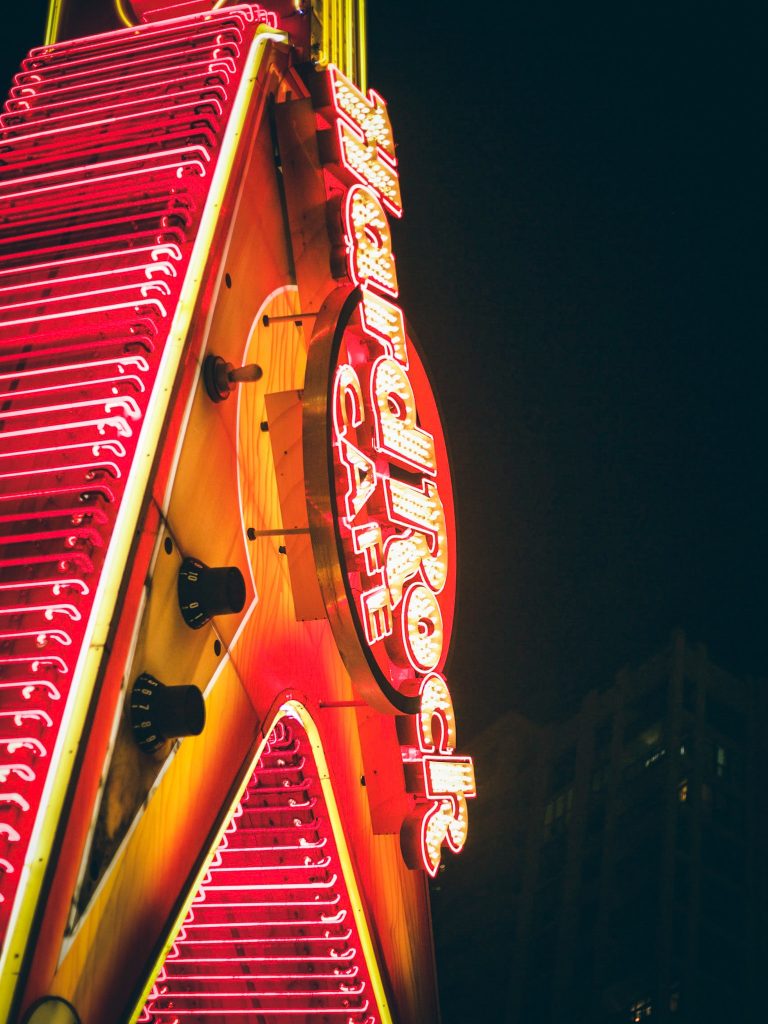
Tribune Tower
Once home to the Chicago Tribune, this neo-Gothic landmark was built as a result of the International Design Competition in 1922. Before this 462-foot (141-meter) building was constructed, reporters from the paper brought back pieces of rock from important landmarks around the world like the Taj Mahal, the Hagia Sophia, the Great Wall of China, and more.
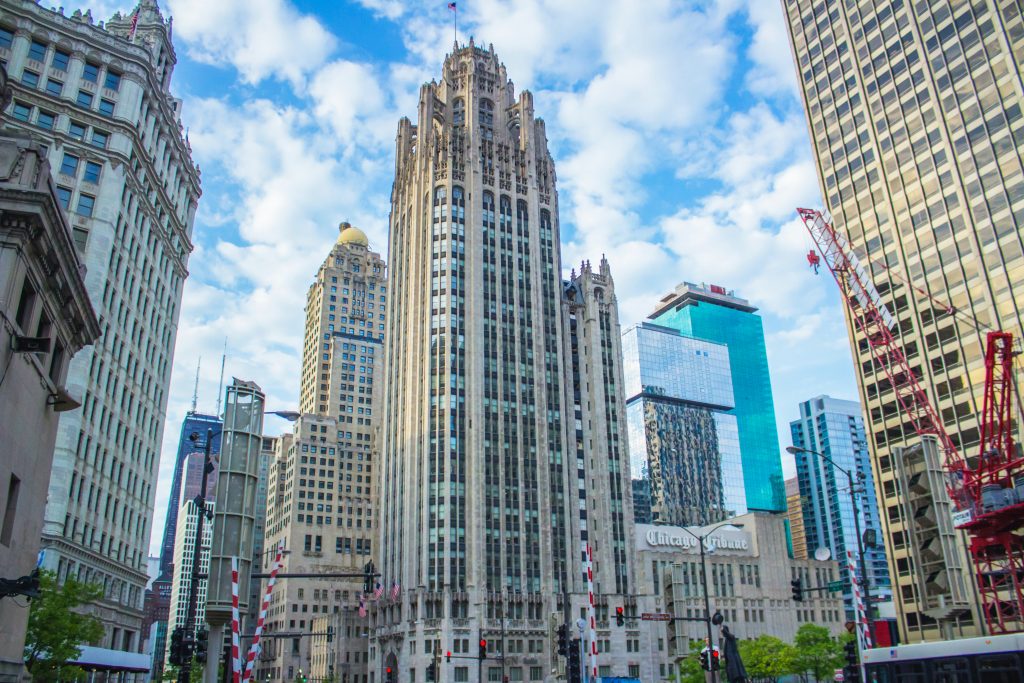
Chicago Theater
The grandeur of The Chicago Theatre often leaves its visitors breathless. The elegant lobby, majestic staircase and beautiful auditorium complete with murals above the stage and on the ceiling, are components of an amazing building called “the Wonder Theatre of the World” when it opened on October 26, 1921 with Norma Talmadge on screen in “The Sign on the Door.” A 50-piece orchestra performed in the pit and Jesse Crawford played the mighty Wurlitzer pipe organ. After a “white glove inspection,” a staff of 125 ushers welcomed guests who paid 25 cents until 1 p.m., 35 cents in the afternoon and 50 cents after 6 p.m.
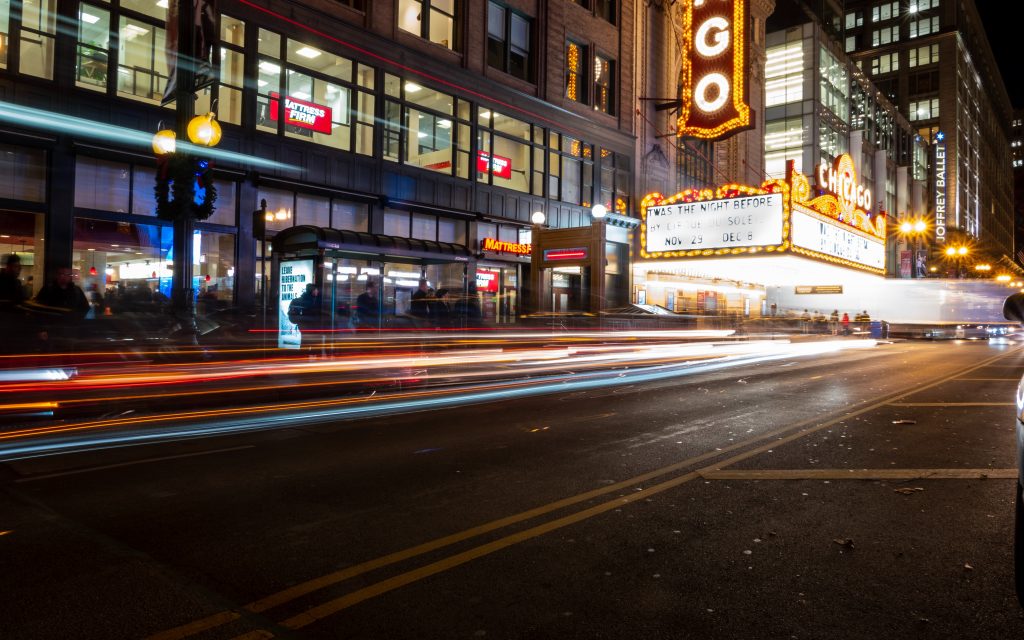
The Chicago Theatre was the first large, lavish movie palace in America and was the prototype for all others. This beautiful movie palace was constructed for $4 million by theatre owners Barney and Abe Balaban and Sam and Morris Katz and designed by Cornelius and George Rapp. It was the flagship of the Balaban and Katz theatre chain.
Built in French Baroque style, The Chicago Theatre’s exterior features a miniature replica of Paris’ Arc de Triomphe, sculpted above its State Street marquee. Faced in a glazed, off-white terra cotta, the triumphal arch is sixty feet wide and six stories high. Within the arch is a grand window in which is set a large circular stained-glass panel bearing the coat-of-arms of the Balaban and Katz chain—two horses holding ribbons of 35-mm film in their mouths.
When to Visit Chicago
If you want to postpone your Galentine’s Day Trip, make sure you look at the weather. Chicago has a wide range of weather that can dictate different activities.
The best times to visit Chicago are April through May and between September and October, when the temperatures are warm, a variety of festivals take place and crowds are manageable. Summer marks Chicago’s peak tourist and festival season, with travelers from around the country hoping to take advantage of the warm weather and abundant activities. You’ll find higher lodging rates during these seasons, but you’ll also escape Chicago’s notoriously bitter winters. Chicago experiences frigid temperatures from November to March, but if you can hack it, hotel and airfare deals are easy to find.
April through May
There are advantages to visiting before or after summer, namely more manageable crowds. Average daytime temperatures hover between the high 50s and low 70s – comfortable conditions for walking around. However, you should come prepared for rain, and be sure to bring a light jacket for those occasional days that fall into the high 30s and 40s.
June through August
Summer is the most popular time to visit Chicago, so expect prices to be at their highest and hotel vacancies to be hard to come by. While booking in advance is generally a good rule of thumb for Chicago, it especially applies to this time of year – plan on locking down your hotel reservations at least three or four weeks in advance. Average summer temperatures range from the high 50s to the mid-80s. But temperatures can fluctuate significantly if there’s a passing heat wave with high humidity or strong breezes from Lake Michigan, so pack a mix of clothes. Also, expect to encounter some rain in August. Along with a full event calendar, the balmy weather offers the ideal setting for exploring by city’s waterways via the best Chicago boat tours.
September through October
Autumn in Chicago offers a sweet spot for tourism. Cooler weather and fewer people mean you’ll enjoy pleasant conditions while exploring the city’s top attractions. Daytime highs hover in the 60s and 70s, but evenings can see temperatures drop into the 40s. Keep in mind that some of the city’s outdoor attractions – like Navy Pier and the Lincoln Park Zoo – may have already reduced their hours for the winter season.
November through March
Biting winds and freezing temperatures (daytime highs rest in the low 30s to high 40s, but wind chills can cause temperatures to drop into the negatives) deter faint-hearted tourists, leaving hotels and flights with plenty of vacancies. If you can stand the wintry weather, you’ll find some of the lowest rates during this time. You can seek refuge from the cold in the city’s museums, but if you’re hoping to visit Millennium Park or shop along The Magnificent Mile, wear your warmest layers.
Best Time to Visit If You’re on a Budget
The winter months (especially January and February, after the holiday season has died down) are optimal for visiting Chicago on a budget. You’re more likely to get cheap prices for hotels, food, activities, and flights. Typically, hotel room occupancy is around 50% during this time, meaning you’ll benefit from discounted prices at even the finest hotels.
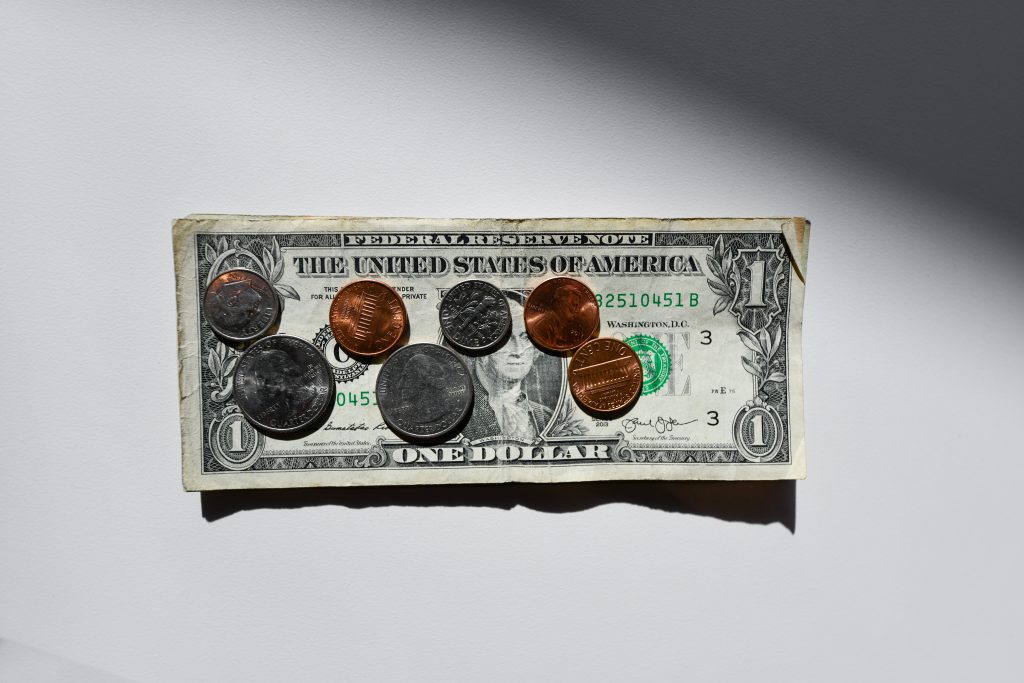
You’ll also get to enjoy savings associated with indoor attractions during Theater Week in February.
However, if you don’t want to deal with the worst weather the city has to offer, you’ll also benefit from significantly lower prices in the spring and fall without having to deal with frigid temperatures. The summer months are when lodgings and activities are going to be the most expensive.
